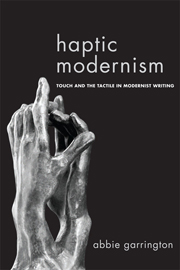Book contents
3 - Virginia Woolf, Hapticity and the Human Hand
Published online by Cambridge University Press: 05 September 2013
Summary
Palm reading
On 11 December 1935, Virginia Woolf paid a visit to Aldous Huxley in his London home, where she had her hand read, or, as she recorded in her diary, ‘spent 2 hours over their Dutch writing table under the black lamp being analysed’ (Woolf 1988b, vol. 2: 59). Her analyst was Dr Charlotte (Lotte) Wolff who, in her Studies in Hand-Reading, published the following year, noted that:
Virginia Woolf's rectangular palm is divided into two by the Head-line which runs right across the hand and ends in a fork. It is the Head-line of a philosopher. It is not influenced by any other part of the palm, but, self-contained, it forms a barrier between the sensitive and imaginative worlds. […] I do not dare to make any final statement as to whether this division leads to a separation between outward impressions and the experiences of the imagination or whether it acts as a power of resistance refining and subtilising outward and inner perceptions. […] The most striking peculiarity of this hand is the shape and position of the fingers, which are straight, pointed and introverted. (Wolff 1936: 89–90)
Wolff's analysis finds in Woolf's palm and finger-shapes a microcosm of broader questions which have arisen in critical appraisals of the author in recent years, and which also surround her presentation for a hand-reading in 1935: to what extent is Woolf a writer of the imagination, to what extent a recorder of sensory experience, and how might her work be seen as attempting to create a bridge, or forked line, encompassing the two?
- Type
- Chapter
- Information
- Haptic ModernismTouch and the Tactile in Modernist Writing, pp. 115 - 141Publisher: Edinburgh University PressPrint publication year: 2013

